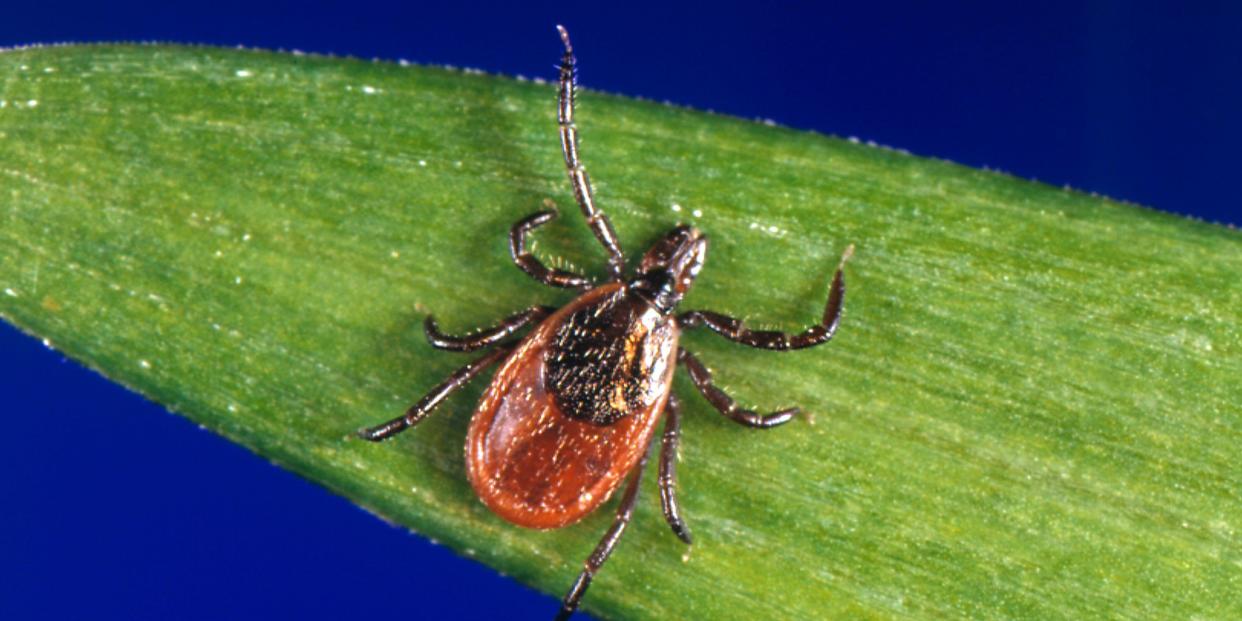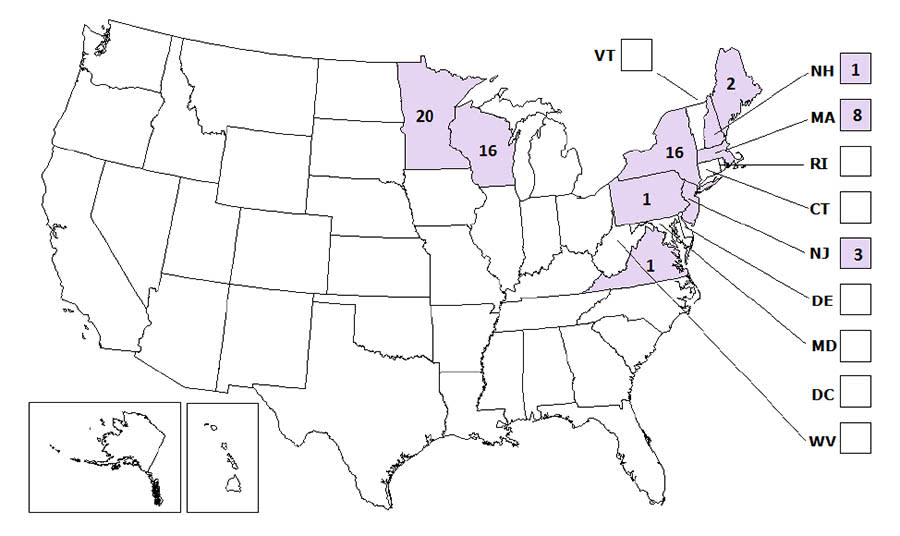A Rare Virus That's Worse Than Lyme Disease Is Being Spread by Ticks

As the weather warms up, you probably know to steer clear of ticks because they spread Lyme disease. But Today.com reports that ticks can also spread a far deadlier disease-one that has no treatment.
That disease is the Powassan virus, which is transmitted by deer ticks just like Lyme disease. And all a tick needs is 15 minutes on your body to transmit the virus to you; Lyme disease needs a full 24 hours to do that. The risk is highest during late spring, early summer, and mid-fall, and you can show symptoms from a week to a month after being bitten. Ten percent of cases are fatal, and 50 percent of cases result in permanent neurological damage, because the virus causes inflammation in the brain.
Luckily, Powassan virus is extremely rare. Only 75 cases have been reported to the Centers for Disease Control and Prevention over the past decade, clustered in the Northeast and the Midwest. Some experts say the number is likely higher, because people with mild symptoms may not even report their condition. Symptoms of Powassan virus include fever, headache, loss of coordination, trouble speaking, and even seizures, and all doctors can do is treat your symptoms while your immune system fights the virus.

Meanwhile, this year has been predicted to be very bad for Lyme disease, based on a model that looks at the number of mice the year prior. Last year, there was a so-called "mouse plague" in certain areas, and mice can infect ticks with diseases like Lyme. So make sure you keep yourself safe from ticks outdoors.
According to the CDC, you should use tick repellents, wear long sleeves and long pants, avoid bushy and wooded areas, and do thorough tick checks after you're done spending time outdoors. And if you think you may be showing symptoms of a tick-borne disease, contact your doctor immediately.
As the weather warms up, you probably know to steer clear of ticks because they spread Lyme disease. But Today.com reports that ticks can also spread a far deadlier disease-one that has no treatment.
That disease is the Powassan virus, which is transmitted by deer ticks just like Lyme disease. And all a tick needs is 15 minutes on your body to transmit the virus to you; Lyme disease needs a full 24 hours to do that. The risk is highest during late spring, early summer, and mid-fall, and you can show symptoms from a week to a month after being bitten. Ten percent of cases are fatal, and 50 percent of cases result in permanent neurological damage, because the virus causes inflammation in the brain.
Luckily, Powassan virus is extremely rare. Only 75 cases have been reported to the Centers for Disease Control and Prevention over the past decade, clustered in the Northeast and the Midwest. Some experts say the number is likely higher, because people with mild symptoms may not even report their condition. Symptoms of Powassan virus include fever, headache, loss of coordination, trouble speaking, and even seizures, and all doctors can do is treat your symptoms while your immune system fights the virus.

Meanwhile, this year has been predicted to be very bad for Lyme disease, based on a model that looks at the number of mice the year prior. Last year, there was a so-called "mouse plague" in certain areas, and mice can infect ticks with diseases like Lyme. So make sure you keep yourself safe from ticks outdoors.
According to the CDC, you should use tick repellents, wear long sleeves and long pants, avoid bushy and wooded areas, and do thorough tick checks after you're done spending time outdoors. And if you think you may be showing symptoms of a tick-borne disease, contact your doctor immediately.
You Might Also Like
